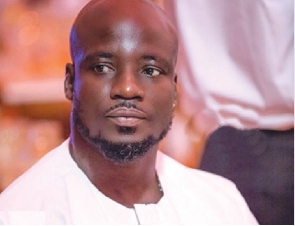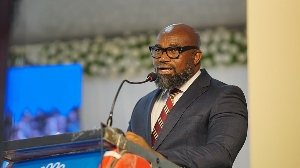- Home - News
- TWI News | TV
- Polls
- Year In Review
- News Archive
- Crime & Punishment
- Politics
- Regional
- Editorial
- Health
- Ghanaians Abroad
- Tabloid
- Africa
- Religion
- Election 2020
- Coronavirus
- News Videos | TV
- Photo Archives
- News Headlines
- Press Release
Opinions of Sunday, 11 March 2007
Columnist: Musa, Mallam
Bui Dam, the only alternative?
Many a Ghanaian cannot ignore the fact that our mighty Akosombo Dam with its Kpong Dam backup has provided the country for quite a long time with the needed power since they were both built a few decades ago. In that same sense, we have come to realize that our dependence on these hydro-electric dams on a river that is highly seasonal is becoming a problem not just for our homes but industries as well. Power rationing is becoming a norm of the day, gone are the days when Ghanaians enjoyed uninterrupted supply of energy and even paid lower tariffs for energy than developed countries like the United States.
The aftermath of all these problems is the dying need for more power generation and the solution our government has come up with is the construction of another hydro-electric dam, on the same seasonal river as the Volta is known for, neglecting all the warnings of analysts and environmentalists about the destruction to the ecosystem of the area as well as the possibility of the flooding part our neighbouring country of the Ivory Coast. The Bui National Park is believed to be the last fragment of pristine wilderness in the entire Volta system and harbours an exceptionally rich fauna and flora that is in imminent danger of being destroyed, excerpt from Daniel Bennet, a researcher banned from the Bui National Park by our government in March 2001.
Lessons from the past with regards to Akosombo and Kpong dams haven’t been learnt and we are just at the brink of committing those same mistakes once again. In 1965, 80,000 farmers of the Volta River valley were forced to move from their lands because of the construction of the Akosombo Hydropower Dam, which flooded more land than any other dam in the world: 8,500 sq. kilometres, almost 4% of the entire area of the country. This area alone is bigger than Lebanon. The dam also set in motion waterborne diseases, especially bilharzias and malaria. Later on, between 1978 and 1981, the Kpong Dam in Ghana displaced 6,000 people and despite assurances that the mistakes of Akosombo would not be repeated, the resettlement programme actually caused problems worse than those of Akosombo. If this new dam is constructed, it would cover as much as 660Km^2 and would flood all the forests of the Bui National Park. The park is home to the larger of two groups of hippos left in Ghana, and of a variety of primates, leopards, ungulates, lizards, butterflies, birds, fish, fruit bat, rodent, dragonflies and other fauna.
Why is our government ignoring reality with regards to the construction of this dam? Who stands to benefit from this big project that will in the end be a fiasco due to a highly seasonal river? Why have independent scientific activities regarding the conservation of a wilderness area to be affected by a dam been banned? These questions need to be answered before the decision is made to displace thousands and create diseases in another area. It is estimated that the cost would be around $600 million dollars. Why would we embark on something that costly with an unreliable source as the Volta Lake has been over the past years? Why would we go to the extent of destroying this ecosystem and changing the lives of thousands of families forever?
From its inception in the 1960’s till today, the dam has not yet been built. This same option was pursued by the past government yet they were unable to implement it. The simple reason is attributed to the fact that the major financial institutions including the World Bank refused to grant loans to the government. Our current government has somehow managed to secure this through the Chinese, why, I may ask. These people don’t care about the outcome of this construction, for Christ’s sake, they have constructed a dam that has displaced thousands and the level keeps rising till present day. An engineering marvel considering its size I would say, but a detriment to the lives of a large group of people. What would be the final outcome to this loan, for the next decades to come, Ghanaians will continue to pay for a worthless dam dependent on a highly seasonal river and pay off the interests top those loans to feed Chinese kids.
Renewable energy is popping up all over the world and developed countries are at the forefront. SWERA (Solar and Wind Energy Resource Assessment) project aims to bring sustainable energy approaches to developing countries through increased investment in renewable energy projects. Ghana is proud to be one of the partner members of this organization. After years of taking measurements at various locations in the country as well as mapping these using satellite technologies and mapping tools a National Renewable Energy Report was submitted to the Energy Commission in January 2005. At that very moment, the same Energy commission went back to the government with a proposal to pursue the construction of the dam.
Other information from this same organization indicate the capacity of Ghana to produce over 5000MW of energy by harnessing the power of the wind alone, which is about three times the capacity of both the Akosombo and Kpong dams running at full capacity. It is about time our policy makers look at other alternatives to this Bui Dam project.
Leave the Bui National Park alone; make it a major tourist attraction, like Kakum and our fortes and castles. Get some good all terrain vehicles at the location for people who would like to go on a Safari, put up a decent hotel in the area for tourists, and advertise it, we will forever gain from the influx of tourists, not to mention the creation of jobs for the people in the area. Remember, if you build it, they will come.
God bless our homeland and open the eyes of policy makers.
Sources : http://www.worldtwitch.com/ghana_bui.htm
http://www.wrm.org.uy/bulletin/46/Ghana.html
http://swera.unep.net/
http://hippo.50megs.com/












